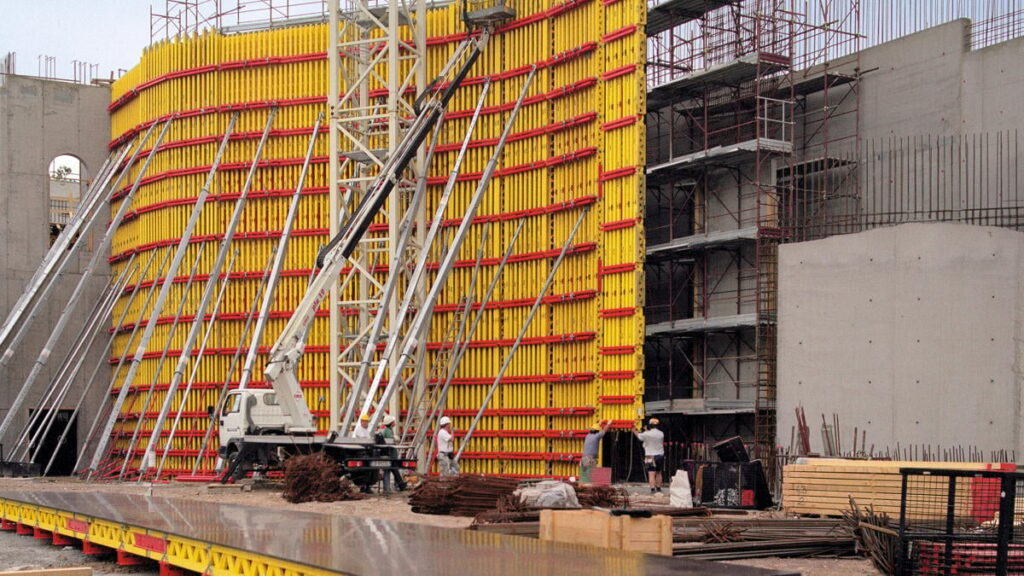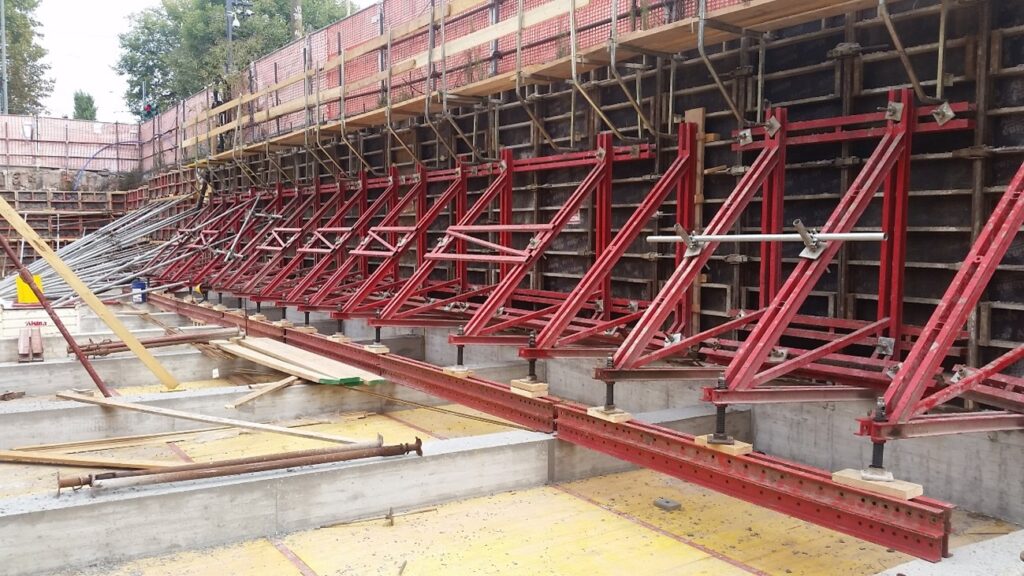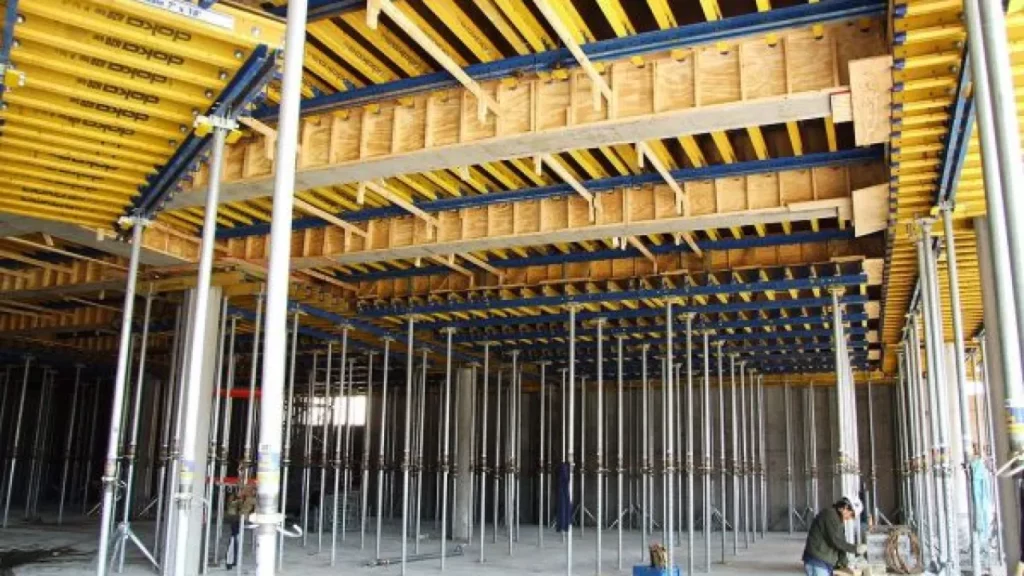Plywood formwork is a crucial component in the construction of curved concrete structures. It not only shapes the concrete but also provides the necessary support during the curing process. Understanding how to select the right plywood formwork is essential for a successful project. This article explores the fundamentals of plywood formwork and offers key tips for choosing the best type for your curved concrete applications.
Understanding Plywood Formwork
By following these tips and guidelines, you can effectively choose and utilize plywood curved concrete forms structures, leading to successful project completion and durable results. Emphasizing the importance of teamwork and communication throughout the process will foster a collaborative environment, where safety and quality are prioritized by all involved. This proactive approach not only minimizes risks but also contributes to the overall efficiency and productivity of the construction project.
Basics of Plywood Formwork
Plywood formwork consists of panels made from thin sheets of wood veneer, which are glued together to create a sturdy yet flexible surface. These panels are designed to be used in constructing molds for casting concrete, and they are favored for their durability and adaptability.
The basic design of plywood formwork allows it to conform to various shapes, making it particularly useful for projects requiring curved surfaces. This formwork is typically used in conjunction with frames to provide the necessary structural integrity to hold the wet concrete until it hardens. The versatility of plywood formwork means it can be easily cut and assembled to meet the specific needs of a project, whether it’s a simple slab or a complex architectural feature. Additionally, the lightweight nature of plywood makes it easier to handle and transport, which can significantly reduce labor costs and time on site.

Importance of Plywood Formwork in Concrete Structures
The role of plywood formwork in concrete structures goes beyond aesthetics. It influences the overall quality and durability of the final product. Properly constructed formwork not only shapes the concrete but also helps in achieving smooth finishes and precise dimensions. The use of high-quality plywood can also minimize the risk of defects in the concrete, such as honeycombing or surface blemishes, which can compromise the structural integrity of the finished product.
The importance of plywood formwork includes:
- Creating a template for complicated designs
- Providing temporary support during the setting of concrete
- Assuring uniformity and consistency in the concrete finish
Moreover, plywood formwork can be reused multiple times, making it a cost-effective solution for large-scale construction projects. This reusability not only helps in reducing material waste but also contributes to sustainable building practices. Furthermore, advancements in plywood technology have led to the development of specialized coatings that enhance water resistance and durability, allowing formwork to withstand harsh construction environments. As a result, builders can confidently rely on plywood formwork to deliver high-quality concrete structures that meet both aesthetic and functional requirements.
Factors to Consider When Choosing Plywood Formwork
Material Quality
One of the most critical factors to consider when selecting plywood formwork is the material quality. High-quality plywood will resist warping and bending, ensuring that the formwork holds its shape throughout the curing process.
Look for plywood with a high Face Grade, which indicates durability and resistance to moisture. Marine-grade plywood is an excellent choice for projects exposed to water, while phenolic plywood can offer better resilience to weather and other environmental factors. Additionally, consider the sourcing of the plywood; sustainably sourced materials not only contribute to environmental conservation but can also enhance the overall quality of the formwork, as they are often produced under stricter quality controls. Read about sustainably at https://sustainability.cornell.edu/
Plywood Thickness
The thickness of the plywood affects its strength and rigidity. Thicker plywood can support heavier concrete loads and provide better stability during pouring. However, it also adds weight to the formwork, which can complicate transportation and installation.
Typically, a thickness of 18mm to 21mm is recommended for curved formwork, but the exact thickness needed can vary based on the specific requirements of your project. Always consider the curvature radius when determining thickness since tighter curves may require stronger materials. Moreover, it is wise to consult engineering guidelines or structural engineers to ensure that the chosen thickness meets safety standards and load-bearing requirements for your specific application.
Surface Smoothness
The surface finish of the plywood can significantly impact the final appearance of the concrete. A smooth surface will lead to a better finish, reducing the need for extensive finishing work once the concrete has cured.
It is important to assess the grade of the plywood, as higher grades generally feature fewer knots and blemishes, leading to smoother surfaces. Additionally, consider applying a release agent on the plywood to further enhance surface integrity and ensure easier demolding. This practice not only protects the plywood from damage during removal but also helps in achieving a cleaner, more precise concrete finish. Furthermore, investing in a quality release agent can prevent the concrete from adhering to the plywood, which is particularly beneficial in projects where formwork is reused multiple times.
Plywood Formwork for Curved Concrete Structures
Special Considerations for Curved Structures
Curved concrete structures present unique challenges compared to traditional flat surfaces. The formwork must be flexible enough to handle the required curvature while maintaining stability and strength.
When constructing curved formwork, consider the following:
- Utilize flexible, high-quality plywood to accommodate tight radii without splitting or breaking.
- Use appropriate bracing to provide extra support and avoid deformation during the concrete pour.
- Check for any gaps in the joints—these can lead to leaks in the concrete mixture, compromising the integrity of the final product.
Additionally, the temperature and humidity conditions during the curing process can significantly impact the performance of the formwork. It’s crucial to monitor these environmental factors closely, as extreme conditions can lead to warping or cracking of the plywood. Implementing protective measures, such as covering the formwork with tarps or using curing compounds, can help mitigate these risks and ensure a successful pour.
Choosing the Right Plywood for Curved Formwork
When selecting plywood for curved formwork, it is essential to evaluate both the type of plywood and its treatment. Look for plywood specifically designed for construction use, as this will often be treated to resist rot and moisture damage.
Moreover, laminated plywood can be particularly beneficial for curved applications as it maintains its shape well while allowing for some flexibility. Ensure that the product is rated for the loads it will encounter during the pouring process, including any additional weight from workers or equipment.
In addition to the type of plywood, consider the thickness of the sheets. Thicker plywood can offer more strength and stability, particularly for larger or more complex curves. However, it is also essential to balance thickness with weight, as overly heavy panels can complicate installation and handling. Consulting with structural engineers or experienced contractors can provide valuable insights into the most suitable plywood specifications for your specific project needs.
Maintenance and Care of Plywood Formwork
Cleaning and Storing Plywood Formwork
Maintaining plywood formwork is key to ensuring its longevity and efficiency for future projects. After use, it is important to clean the formwork to remove any residual concrete or release agents. A gentle scrub with a soft brush and a mild detergent can effectively eliminate stubborn residues without damaging the surface of the plywood. For particularly tough spots, a pressure washer can be utilized, but care must be taken to avoid delaminating the layers of the plywood.
Store the cleaned formwork in a dry, sheltered area to prevent moisture absorption, which can lead to warping and degradation. It is also advisable to stack the formwork sheets properly to maintain their shape and protect them from physical damage. Using spacers between sheets can further enhance airflow and reduce the risk of moisture buildup. Additionally, covering the stacked formwork with a breathable tarp can provide extra protection from dust and debris while still allowing moisture to escape. To find more about moisture click here.
Extending the Lifespan of Your Plywood Formwork
To extend the lifespan of your plywood formwork, consider applying a protective sealant. This will guard against moisture, stains, and other potential damage. Regular inspections for wear and tear can catch issues early, allowing for repairs or replacements before they become critical. During these inspections, pay close attention to the edges and corners, as these areas are often the most susceptible to damage from handling and impact.
Additionally, utilizing the formwork for similar projects helps minimize wear since it reduces the likelihood of damage from handling and transportation. Always aim to maintain detailed records of usage and repairs to inform future projects. Implementing a rotation system can also be beneficial; by alternating the use of different sheets, you can distribute wear evenly across your inventory. Moreover, consider investing in a dedicated storage solution, such as a formwork rack, which can facilitate easier access and organization while protecting the formwork from potential environmental hazards.

Safety Measures in Using Plywood Formwork
Safe Handling of Plywood Formwork
Safety is paramount when working with plywood formwork, especially due to the weight and bulk of the materials involved. Proper lifting techniques should always be employed, and team members should be trained in the correct handling procedures. It is essential to establish a clear communication protocol among team members to ensure that everyone is aware of their roles during the handling process. This can significantly reduce the risk of accidents and injuries on-site.
Using the right equipment, such as forklifts or hoists, can help prevent injuries. Additionally, wearing appropriate personal protective equipment (PPE), such as gloves and steel-toed boots, is crucial while handling plywood. Regular inspections of the PPE should be conducted to ensure that it is in good condition and provides the necessary protection. Furthermore, training sessions on the importance of PPE can reinforce a culture of safety among workers, making them more vigilant about their own safety and that of their colleagues.
To read about formply click here.
Ensuring Stability and Strength in Construction
Finally, ensuring the stability and strength of your formwork during construction is essential for safety and quality. Regularly check all connections, supports, and braces to confirm that they are secure before pouring concrete. It is also advisable to conduct load tests on the formwork to verify its ability to withstand the expected weight of the concrete. These tests can help identify any weaknesses in the setup that need to be addressed before proceeding with the project.
Followed by continuous monitoring throughout the pouring process will help mitigate the risk of shifting or collapsing. Implementing these practices not only ensures safety but also enhances the overall integrity of the finished concrete structure. Additionally, utilizing advanced technologies, such as sensors to monitor pressure and stability in real-time, can provide an extra layer of assurance. These innovations can alert workers to any potential issues before they become critical, ensuring a smoother and safer construction process.

